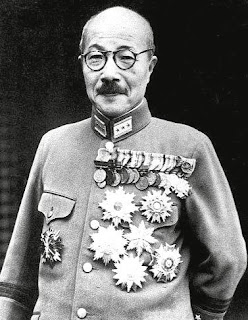Shocking Secrets of the Infamous Characters Who Rival Hitler Hideki Tojo : The Architect of Japan’s War Crimes
Shocking Secrets of the Infamous Characters Who Rival Hitler Hideki Tojo : The Architect of Japan’s War Crimes
Hideki Tojo, the general and Prime Minister of Imperial Japan during World War II, indeed played a significant role in overseeing and perpetuating Japan’s war crimes and brutalities. His actions had a devastating impact on millions of innocent lives. Here are some specific examples of the war crimes associated with Hideki Tojo:
1. Unit 731: One of the most notorious war crimes associated with Hideki Tojo is the establishment of Unit 731, a covert biological and chemical warfare research unit. Under the guise of conducting medical research, Unit 731 conducted horrific experiments on thousands of Chinese, Korean, and other prisoners of war. These experiments included vivisections, forced infections, exposure to deadly diseases, and testing of chemical agents.
The victims suffered excruciating pain and death, and it is estimated that up to 250,000 people were subjected to these inhumane experiments.
2. Rape of Nanking: Tojo was not directly responsible for the initial invasion of China or the subsequent massacre that occurred during the Rape of Nanking in 1937-1938. However, as a high-ranking military official and later Prime Minister, Tojo played a crucial role in enabling and perpetuating the atrocities committed by the Japanese Imperial Army. The brutal invasion of Nanking resulted in the mass murder, rape, and torture of hundreds of thousands of Chinese civilians and disarmed soldiers.
The exact number of victims remains disputed, but conservative estimates suggest that at least 200,000 Chinese were killed, and tens of thousands of women were raped.
3. Forced labor and mistreatment: To support Japan’s war effort, Tojo implemented policies that led to the enslavement and forced labor of millions of people across occupied territories, including China, Korea, and Southeast Asia. These individuals were subjected to harsh conditions, inadequate food, and brutal treatment. Many died due to exhaustion, malnutrition, and abuse while working in mines, factories, and construction projects.
4. Bataan Death March: Tojo’s regime was responsible for the infamous Bataan Death March, which occurred in April 1942 in the Philippines.
Japanese guards subjected approximately 60,000-80,000 prisoners of war to a grueling 65-mile march after Filipino and American troops surrendered. The march involved extreme physical abuse, torture, and mass killings, leading to the deaths of thousands of prisoners due to exhaustion, dehydration, and the brutal actions of the guards.
These are just a few examples of the war crimes and atrocities associated with Hideki Tojo. His leadership and policies contributed to the suffering and deaths of millions of people throughout East Asia. The full extent of the brutality under his regime is difficult to quantify, but it is clear that Tojo played a significant role in Imperial Japan’s heinous actions during World War II.




Comments
Post a Comment